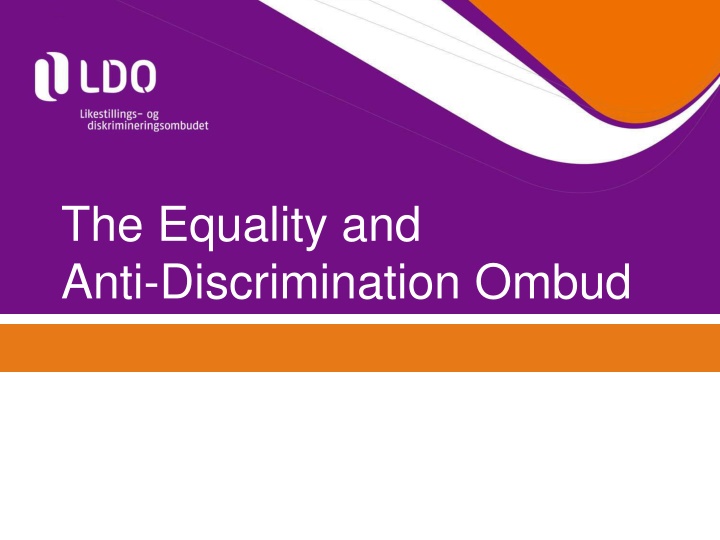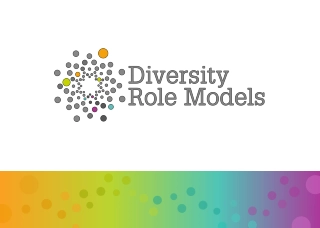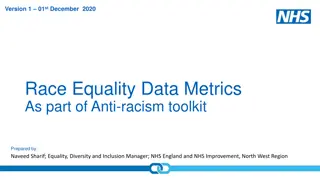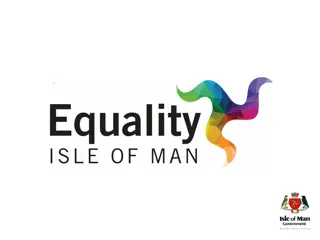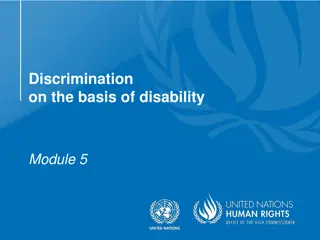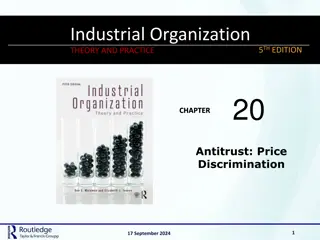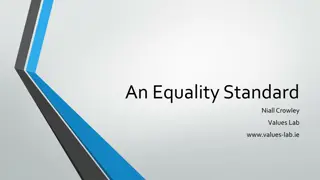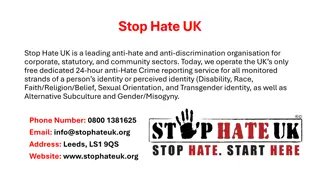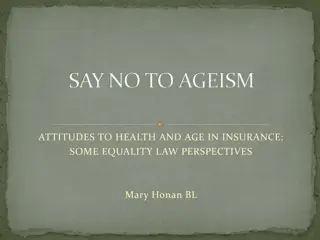The Equality and Anti-Discrimination Ombud - Structure, Role, and Legislation
The Equality and Anti-Discrimination Ombud, established in 2006, plays a crucial role in upholding laws and promoting equality across society. With a focus on providing opinions on complaint cases, offering information on legal rights, and influencing societal trends, it serves as an independent public administrative agency crucial for ensuring fairness and justice.
Download Presentation

Please find below an Image/Link to download the presentation.
The content on the website is provided AS IS for your information and personal use only. It may not be sold, licensed, or shared on other websites without obtaining consent from the author.If you encounter any issues during the download, it is possible that the publisher has removed the file from their server.
You are allowed to download the files provided on this website for personal or commercial use, subject to the condition that they are used lawfully. All files are the property of their respective owners.
The content on the website is provided AS IS for your information and personal use only. It may not be sold, licensed, or shared on other websites without obtaining consent from the author.
E N D
Presentation Transcript
The Equality and Anti-Discrimination Ombud
Structure and organisation The Ombud established 1 January 2006 Integrates three former offices An Independent public administrative agency Subordinate to the Ministry of Children and Equality Affairs Free from instruction from the Ministry the Equality and Anti-discrimination Tribunal
Roles and tasks The Ombud upholds the law and promote equality in all areas of society: Gives opinions on complaint cases (subject to appeal), hence not decisions Provides information legal rights and responsibilities Surveys and identifies trends resp. for influencing society and government Provides employers with information/guidance Serves as a Forum and information centre
Legislation and structure Gender Equality Act 1978, 2013 Anti-discrimination Act 2005, 2013 Discrimination and Accessibility Act 2008, 2013 Discrimination Law on Sexual Orientation (gender expression and gender identity) 2013 Other legislation Labour Environment Act (political opinion, labour unions, age, sexual orientation) Housing legislation (sexual orientation) CEDAW, CERD and CRPD Anti-discrimination Ombud Act Structure and organisation, Roles and tasks
The Equality and Anti-Discrimination Tribunal Administrativ body Makes legally binding decisions in individual cases Orders measures to prevent and rectify discriminatory conditions Issues coercive fines
History It all started with the Gender Equality Act of 1979 Purpose: Promote gender equality The Gender Equality Ombud was established at the same time to enforce the Act Creation of The Equality and Anti-Discrimination Ombud 2006, Anti- Discrimination Act plus housing laws. DTL 2009 Fragmented legislation New anti-discrimination Acts of 2013.Harmonizing purpose
The Gender Equality Act Incorporation of CEDAW Main elements: Direct and indirect differential treatment Affirmative actions Equal payment for work of equal value Equal right to education Harassment Shared burden of proof Duty to promote Gender equality Duty to report (annually) on status and measures
Scope General nature covers all sectors Exceptions: Not to be enforced in the sphere of family life and personal matters Removal of previous exception for religious communities*
General Clause Direct discrimination Unequal treatment of men and women due to the fact they are of a different sex Unequal treatment due to pregnancy or use of parental rights awarded each sex in connection with childbirth, past assumed, future and by association Indirect discrimination: Unequal treatment of full-time and part-time employees Unequal treatment in connection with use of extended parental leave
Affirmative Action Different treatment may promote gender equality Affirmative action in favour of women Quotas/ radical affirmative action (purely based on gender) is illegal, but mild affirmative action is permissible Affirmative action in favour of men Mild affirmative action permissible but exclusively connected with child care/teaching professions
Public appointments: Representation in public committees etc When a public body appoints or elects committees, etc., with four or more members, each sex must be represented by at least 40 per cent of the members. 2- 3persons: both sexes 4-5 persons: 2x each sex 6-8 persons: 3x each sex
Gender Equality in employment Gender neutral job listings unless obvious reasons Actors and models Patient care Equal treatment in employment, promotion, dismissal Questions during job-interview Opportunities to pursue further education while in employment Criteria for dismissal
Equal Pay Identical jobs or jobs of equal value (irrespective of collective bargainings) Relevent evaluation criteria: Education Skills and experience Responsibility Working condition etc Example: a nurse and a doctor each functioning as an administrative manager in the same hospital
Equal right to Education Men and women have an equal right to education Employers shall treat women and men equally with regard to training, further education and leave of absence in connection with education etc.
Gender based and sexual harassment and further prohibitions No person may subject another person to gender based or sexual harassment (Employers/public and educational institutions are responsible for preventing and seeking to preclude the occurence of harassment - Related to duty to promote gender equality) Prohibition against instruction, retaliation, contribution to discriminate
Liability for Damages Responsibility regardless of fault Damages may be awarded only by a court of law
Duty to promote gender equality Public authorities, educational institutions Employer Active, targeted and systematic efforts Account of status and measures in annual report Educational institutions and teaching material The Ombud monitors
The Anti-Discrimination Act Incorporation of CERD Purpose: Fighting ethnic discrimination and promoting ethnic equality Discriminatory grounds: Ethnicity, nationality, language, skin colour, religion
The Anti-Discrimination Act Main elements: Applies to all areas of society *, except private sphere *Employment &working environment, health & social benefits, housing, police matters, bars & discotheques, consumption, immigration
Anti-Discrimination Act contd Main elements (cont.): Prohibition against direct and indirect discrimination harassment Instructions for discrimination or retaliation Employers seeking information regarding employee s religious or cultural opinion Retaliation Serious breach made in view of others (minimum two persons) may be subject to penal fine or 3 years max.prison
The Anti-Discrimination Act Main elements (cont.): Effective sanctions*: Damages and compensation imprisonment up to 3 years for serious breaches * Coercive finesand injunctivemeasures may also be ordered in accordance with the Antidiscrimination Ombud Act which regulates the Ombud and the Tribunal smandate
The Anti-discrimination and Accessibility Act (2009) Three main provisions 4: A prohibition to discriminate on the grounds of disability directly and indirectly 9: A duty for businesses open to the public to ensure universal design of their business main tasks, to secure accessibility for as many people as possible - physical environment, IT 12: a duty placed upon employers, schools, councils providing child care and health services, to adapt the services to individually accomodate persons with disabilities
Ombud case law: Anti-discrimination and Accessibility Act Discrimination directly or indirectly due to inaccessible services bank services on the internet, payment options, air travel etc. Passed over in process of recruitment Health requirements for certain jobs Employer s duty to individually adapt tasks to employee with disability ADHD, epilepsy etc. Universal design of businesses
Anti-Discrimination and Accessibility Act (DTL)
Discrimination Law on Sexual Orientation Sexual orientation (before covered under Employment Environmentt Act) Gender identity* (before covered by Gender Equality Act) and gender expression, construed as one discrimination ground.
What and who is protected? The fact that one has a love or sexual preference for a person of a specific gender (much more than purely sexual approach. No need to have an established sexual identity such as homesexual, lesbian or bisexual. Heterosexuals are also covered. Sexual practice preferences are not protected (fetichism, etc) Gender identity self defined and covers several groups: transsexuals/ transgender,transvestites, inter-sex persons,(without limitation).
Protection grounds Visible and based on the fact that one does not fit Based on the knowledge of gender correctional treatment Gender expression/ identity can apply in lieu of sexual orientation The problems that stem from the heteronormal framework (concepts, typical expressions like coming out of the closet
Prohibitions and duties Direct and indirect discrimination Harassment, instruction, retaliation, participation Public and social institutions duty to act Educational institutions duty to prevent harassment Employers employing over 50 employees and public sector employers duty to act , including wages, promotion, prevention against harassment. Duty to report in annual statement. A weakness? No duty to accomodate (schools)*. Is duty to prevent harassment sufficient?
Challenges Different challenges for different groups Minoriteies within groups: transgender with both sexes, without determined sex, plus variations. Intersex children operated at early stage. Continuing treatment, must be adapted. Indirect discrimination. Sterilization required for sex change operation. Direct discrimination
Examples of cases/questions Gender Identity Transexual person not entitled to tax credit for change of sex operation undergone abroad Harassment Sterelization required for sex- change operation Lack of accomodation at school for 13 year old transgender pupil
Common rules for Burden of Proof Plaintiff must show presumption: reasons to believe that different treatment has occurred Respondent must rebut
Thank you The Equality and Anti-Discrimination Ombud Telephone: +47 24 05 59 50 E-mail: post@ldo.no Internet: www.ldo.no
